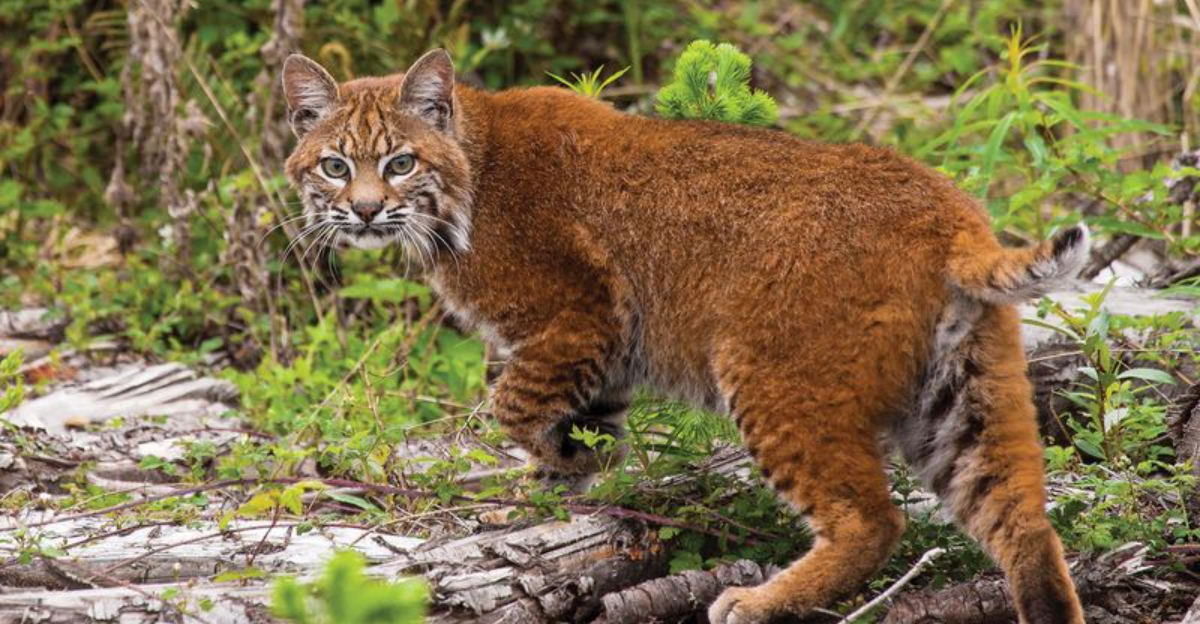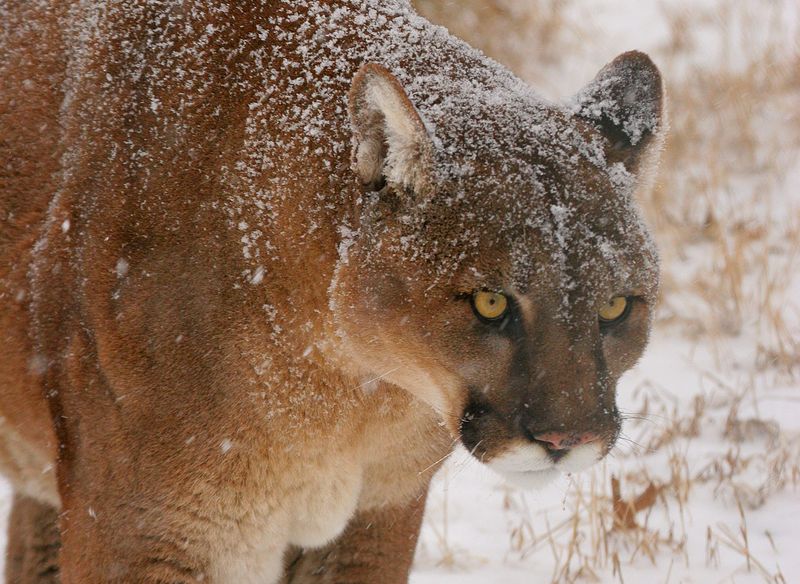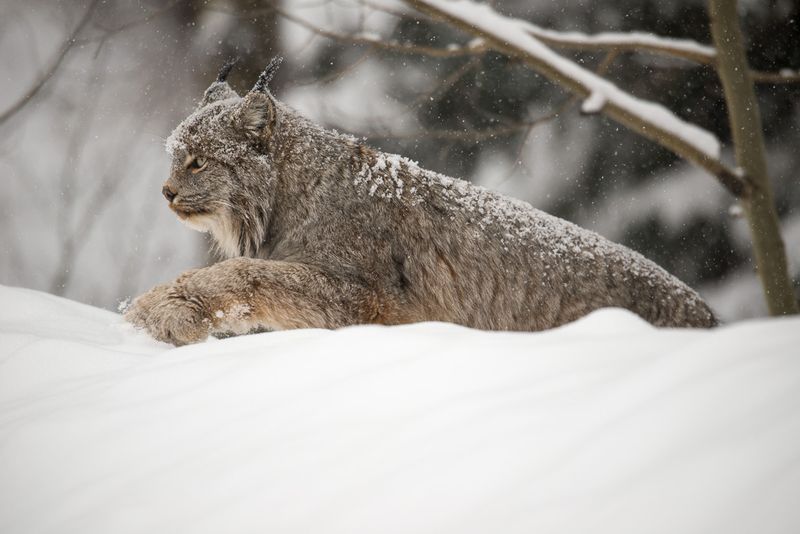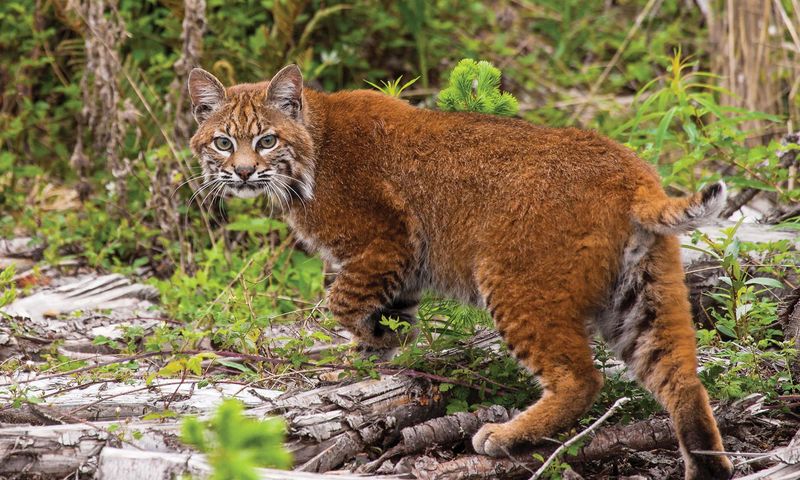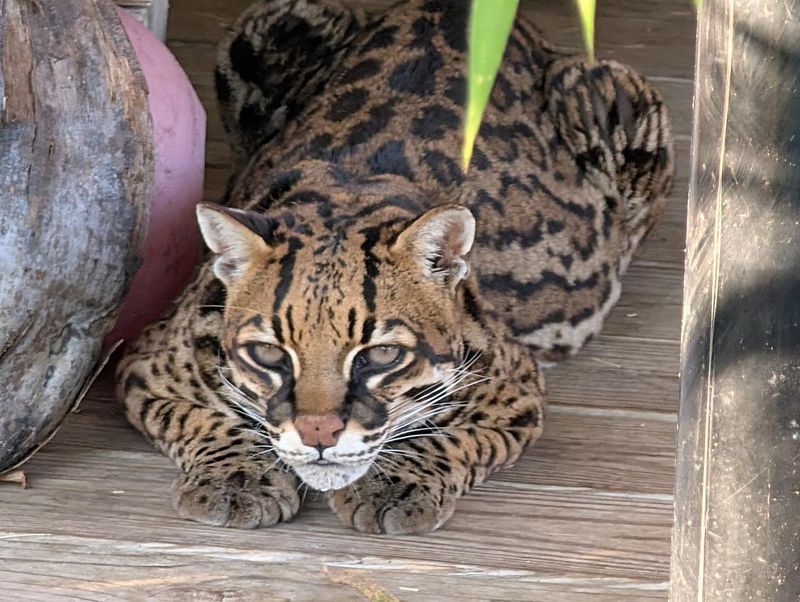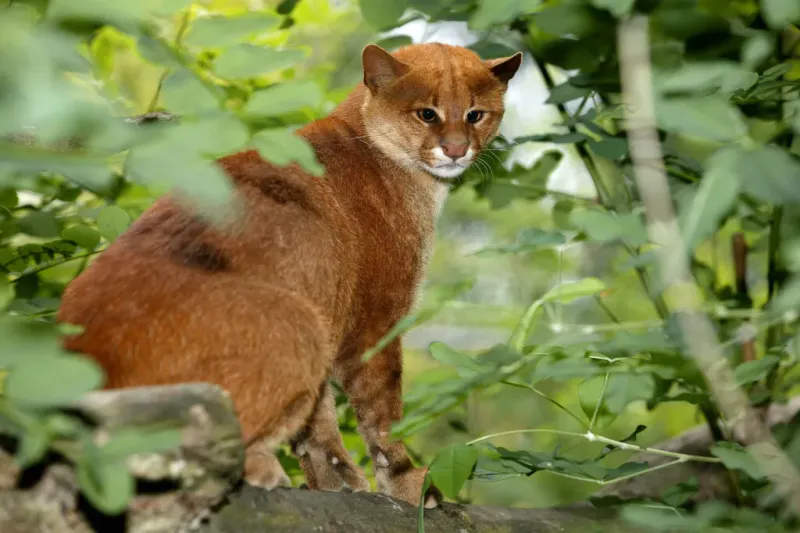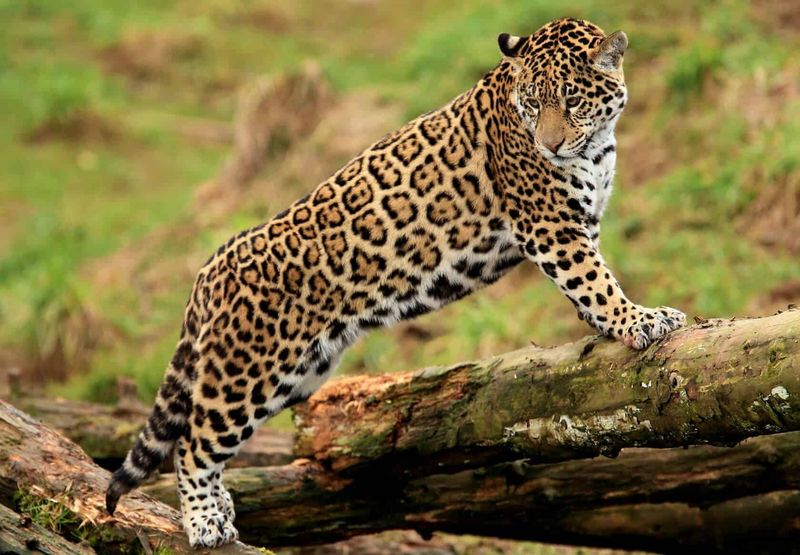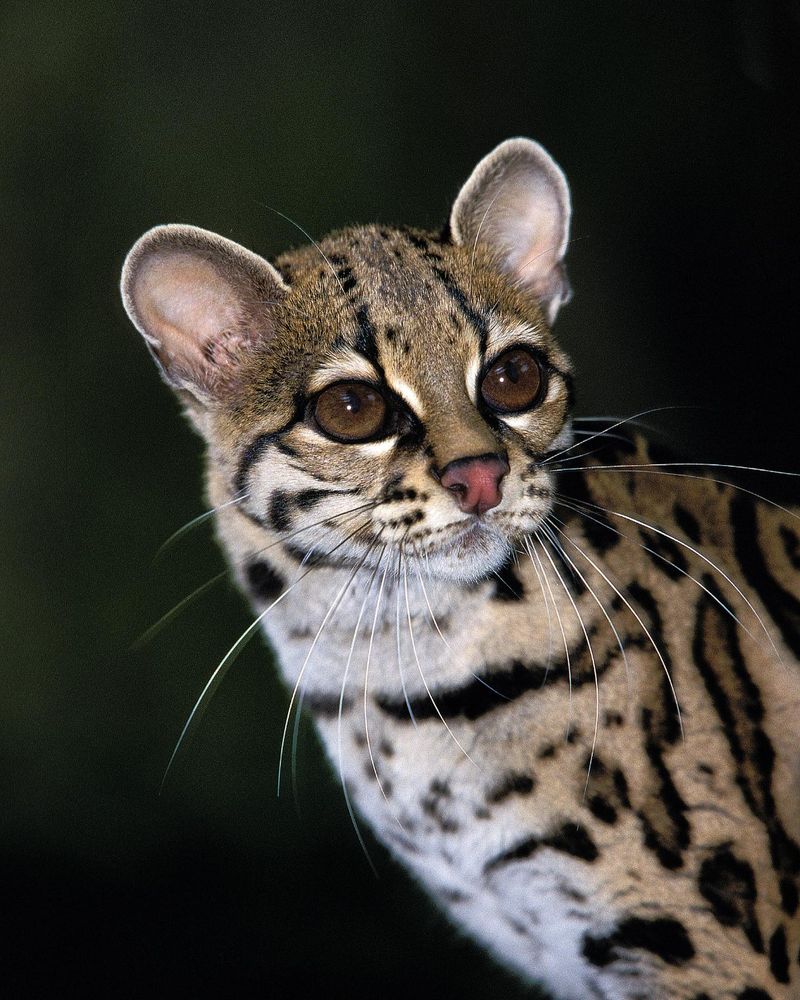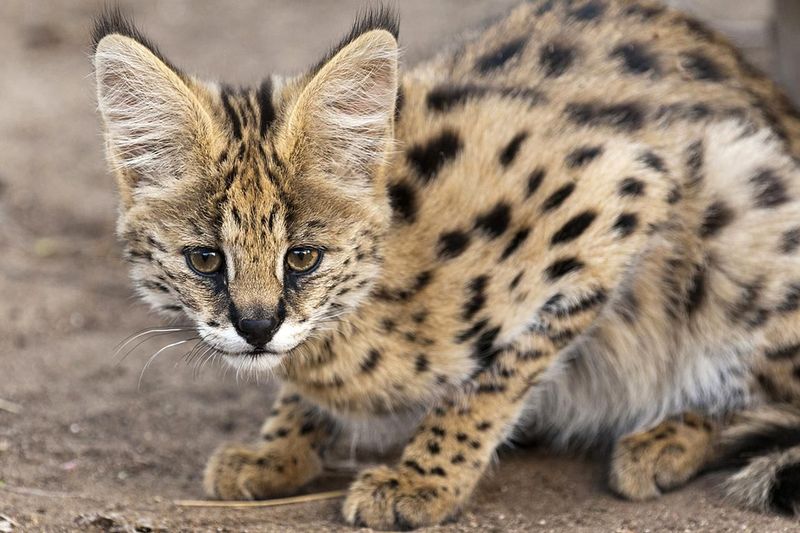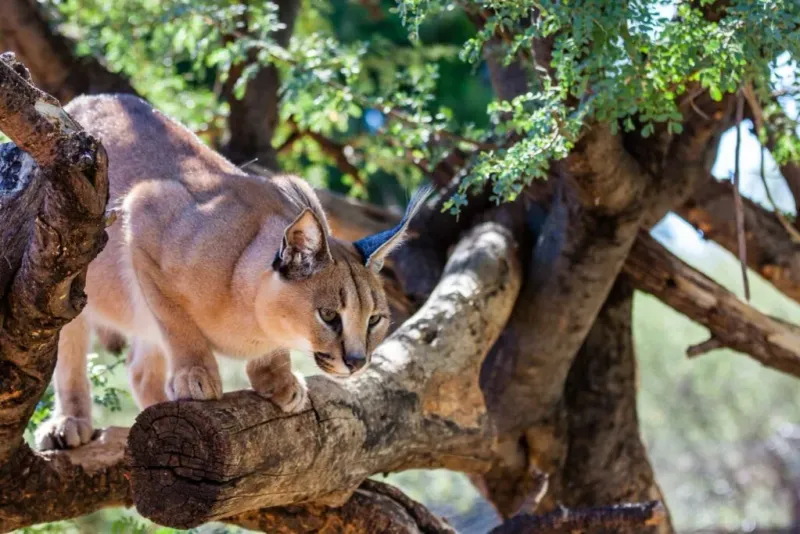📖 Table of Content:
North America’s diverse landscapes provide shelter to several extraordinary wild cat species. These elusive predators have adapted to thrive in forests, deserts, and mountainous regions across the continent. Each plays a vital role in maintaining balance within their respective ecosystems.
Despite their beauty and mystique, wild cats are not suited for life in captivity. Attempts to tame them often lead to stress, behavioral issues, and safety concerns for both humans and animals. Their instincts, territorial nature, and need for wide-ranging environments make domestication unrealistic and harmful.
Admiring these cats from a respectful distance helps protect both the animals and the people around them. Conservation efforts focus on preserving habitats rather than removing animals from the wild. Wild cats deserve the freedom and space they need to live as nature intended.
1. Mountain Lion
Mountain lions go by many names – pumas, cougars, or panthers. These powerful cats can weigh up to 200 pounds and leap 40 feet horizontally. Their muscular build makes them perfect hunters in the wild but dangerous in domestic settings.
Several tragic incidents have occurred when mountain lions kept as pets attacked their owners or visitors. These animals need vast territories spanning up to 370 square miles in the wild.
Young cubs may appear cute and tamable, but they quickly grow into powerful predators with natural hunting instincts. Mountain lions can live 20 years, meaning an impulse purchase becomes a dangerous decades-long commitment that few homes can safely accommodate.
2. Canada Lynx
Deep snow poses little challenge for the Canada lynx, thanks to its large, padded paws that distribute weight like snowshoes. Its appearance is marked by sharp ear tufts, a ruffled face, and a short, black-tipped tail.
These medium-sized cats have specialized hunting techniques for catching snowshoe hares, their primary prey. When kept in captivity, lynx develop behavioral problems from the inability to express natural hunting behaviors.
Canada lynx require cold environments and suffer in warmer climates. They’re protected under the Endangered Species Act in many states, making ownership illegal. Their thick winter coats require specialized care, and they’re prone to stress-related illnesses when kept in artificial environments without proper space to roam.
3. Bobcat
With their short “bobbed” tails and tufted ears, bobcats are easy to recognize among North America’s wild cats. They’ve adapted to a wide range of habitats, including forests, wetlands, and neighborhoods. This versatility makes them one of the most widespread predators in the U.S.
Though smaller than many wild cats, bobcats possess powerful bodies and sharp hunting instincts. In captivity, they become stressed and destructive, tearing up furniture and marking territory with strong-smelling urine.
Adult bobcats can weigh up to 40 pounds and require large territories to patrol. Their diet consists of rabbits, rodents, and birds – not commercial cat food. Even hand-raised bobcats retain their wild nature and can become aggressive as they mature.
4. Ocelot
Known for their luxurious, dappled fur, ocelots have long been hunted for their pelts. These sleek, medium-sized cats feature bold eyes in shades of gold or green and can weigh as much as 35 pounds. Their habitat spans from the southern tip of the U.S. into much of Latin America.
During the 1960s, ocelots became fashionable exotic pets among celebrities. Today, they’re protected under the Endangered Species Act, with fewer than 50 estimated to remain in the wild in Texas. Owning one requires special permits that are rarely granted.
Ocelots mark territory by spraying strong-smelling urine – a habit that doesn’t disappear in captivity. They’re nocturnal by nature and become frustrated when forced to adapt to human schedules, often resulting in destructive behaviors.
5. Jaguarundi
Jaguarundis have a unique appearance resembling weasels more than typical cats. Their slender bodies, small ears, and uniform coloration (either reddish-brown or gray) set them apart from other wild felines. Found primarily in Mexico and parts of southern Texas, these cats prefer dense brush and forest edges.
Unlike many wild cats, jaguarundis are active during daylight hours. This diurnal nature might seem compatible with human schedules, but it doesn’t make them suitable pets.
In captivity, jaguarundis become restless without proper enrichment and space to explore. They’re skilled climbers requiring tall enclosures and complex environments. Their conservation status is protected in the United States, making ownership illegal without proper permits.
6. Jaguar
As the largest wild cat in North America and the third-largest in the world, jaguars are unmatched in strength and stealth. Their historical range once included the southwestern United States, but today they’re mostly found in Mexico and further south.
A male jaguar can weigh over 300 pounds with massive jaw strength capable of crushing turtle shells and piercing skulls. Their distinctive rosette spots differ from leopards by having small dots inside each rosette.
Jaguars require enormous territories and are excellent swimmers who often hunt near water. They’re solitary and territorial by nature, making them impossible to socialize as pets. Even zoos struggle to provide adequate space for these magnificent cats, whose strength and hunting instincts make them potentially lethal to humans.
7. Margay
Often mistaken for smaller ocelots, margays have similar spotted coats but are built for life in the treetops. With ankles that can rotate 180 degrees, they can descend trees headfirst and even dangle from branches with a single paw. These agile climbers typically weigh under 9 pounds.
Though they occasionally appear in the exotic pet trade, margays fare poorly in captivity. They’re extremely sensitive to environmental changes and stress easily. Their specialized diet consists of birds, tree frogs, and small mammals found in forest canopies – nutrients difficult to replicate in captivity.
Margays rarely breed successfully outside their natural habitat. Their natural range barely extends into southern Texas, and they’re listed as Near Threatened due to habitat loss. Owning one supports illegal wildlife trafficking that further endangers wild populations.
8. Serval
Although servals come from Africa, they’ve become a familiar sight in exotic pet collections and wildlife sanctuaries across North America. Their long legs—proportionally the longest of any cat—give them an incredible vertical jump. With this ability, they can snatch birds right out of the air from over 9 feet below.
Their distinctive golden coats with black spots and stripes make them popular in the exotic pet trade. However, servals require specialized diets including whole prey items and can’t thrive on commercial cat food.
Even hand-raised servals retain strong hunting instincts and territorial behaviors. They mark territory by spraying urine on walls and furniture – a behavior that can’t be trained away. Their powerful legs and natural prey drive make them unpredictable around small pets and children, and escapes from private ownership happen regularly.
9. Caracal
Caracals captivate with their striking appearance – tawny coats, dramatic black ear tufts, and athletic builds. Though native to Africa and parts of Asia, these medium-sized cats increasingly appear in North American exotic animal collections and private ownership.
Growing up to 40 pounds, caracals possess incredible strength and agility, capable of leaping 10 feet high to catch birds mid-flight. Their powerful hind legs make containment challenging, as they can easily clear standard fencing.
Caracals require specialized diets including whole prey animals. They mark territory with pungent urine that permeates home materials. Even raised from kittens, caracals maintain wild instincts that emerge unpredictably during adulthood, potentially resulting in serious injuries to owners or household members.
